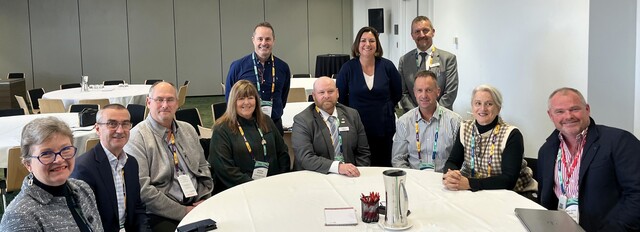A new year has heralded a new beginning for many councils across Australia. In the Northern Territory, eight ‘super shires’ have become regional councils, which will oversee the local authorities in 63 Territory communities.
January 2 saw the swearing in of councillors in four deamalgamated Queensland councils – Noosa, Livingstone, Douglas and Mareeba.
Local Government Association of Queensland President Margaret de Wit said that the official creation of four new local government authorities on January 1 was an important and symbolic moment for local government.
“The communities of Noosa, Livingstone, Douglas and Mareeba have today reclaimed their right to determine their own representation at a local level,” she said.
“It’s an exciting day for residents, new council staff and elected members across the four regions.”
Other changes are already on the horizon for local government throughout Australia.
In their submission to the National Commission of Audit, the Australian Local Government Association (ALGA) pointed out that the old definition of ‘core’ local government services such as ‘roads, rates and rubbish’ no longer applies. Local government’s roles extend across governance, advocacy, service delivery, planning and community development, and regulation. The modern council delivers a range of services broader than ever before. According to the ALGA submission, the focus is shifting from ‘hard’ infrastructure provision to a greater relative importance of social services including health, welfare, safety and community amenities, with these services often provided in partnership with other levels of government.
As local government’s place in the Australian political hierarchy and the need for official recognition continues to be debated, the collaboration between local government and state and federal governments is of utmost importance.
The widening service provision role into more human service areas will see a continued blurring of roles and responsibilities with other levels of government.
The roads ahead
LG Focus has previously looked at the Federal Government’s focus on roads and infrastructure going forward, and how councils stand to benefit from increased spending in these areas.
Two major Western Australian projects contingent on the Labor mining tax – the Great Northern Highway (Muchea to Wubin) and the North West Coastal Highway (Minilya to Barradale) were ‘rescued’ by the Coalition Government, with Minister for Infrastructure and Regional Development Warren Truss and Assistant Minister Jamie Briggs announcing $480 million in funding for the two projects in December.
Mr Truss said the Coalition were picking up the pieces after the Regional Investment Fund was left ‘bankrupt due to Labor’s dud mining tax’ and were working with the state government to deliver important projects.
“[The funding] announcement is another clear example of the Coalition’s commitment to infrastructure and the priority we place on it as part of our plan to drive strong economic benefits for our major cities and regional areas.”
Similar announcements promised project funding for ‘roads left in limbo by Labor’ in South Australia, Queensland and New South Wales.
But the news is not all good for road funding. The Western Australian Local Government Association (WALGA) in December questioned the validity of more than $70 million in cuts to local road funding proposed by the State Government.
WALGA President Troy Pickard said the decision would break a formal agreement by the State to contribute a share of funding from vehicle licence fees to local government roads, and if carried out would significantly impact upon local government operations.
“This is a core source of funds for local governments in achieving their critical role to deliver a safe road network.
“In many cases, councils already have entered into contracts to deliver much needed improvements to local roads. To have this funding now stripped away will leave local governments in the situation where they either need to cancel contracts or fund the shortfall, which will shift the cost on to the ratepayers and place additional risk to the safety of the road network.”
The ability of councils to deliver an expanded range of services across Australia varies, with factors such as revenue base, availability of grants, and the capacity of individual councils in terms of expertise and manpower meaning many councils, especially those in rural areas, are unable to keep pace with their urban counterparts.
ALGA has called for “an untied revenue stream that reflects actual costs of service and infrastructure provision, keeps pace with demand and promotes equality throughout the nation.” As communities expect more from their councils, it is essential that smaller and more isolated communities are not left behind.
How high can they go?
The other big factor for council revenue streams – rates. No council wants to increase the burden on its ratepayers, but increases are inevitable as councils deal with the increased reliance for services such as libraries, aged care and children’s services. Particularly in rural and regional areas, residents feel the pinch with lower council revenue streams accompanied by higher demand for council services. In 2013 the Municipal Association of Victoria President Bill McArthur said council research had shown ratepayers were not willing to give up services for lower costs, but wanted more for less.
In December, independent ratepayers association Ratepayers Victoria said their message to councils was to focus on roads, rates and rubbish. But community dissatisfaction with management of ‘core services’ may also be a reflection of how well councils are performing in other areas, such as libraries, recreational facilities and support for the elderly. Amalgamations can improve efficiencies and provide larger budgets, but perhaps at the expense of community engagement. Perhaps in 2014 more councils can look at working together to improve budget efficiency and services for residents. An example is Mildura and Wentworth councils, who despite being on opposite sides of a state border are calling for joint tenders for waste management, thereby enabling the smaller Wentworth Shire Council to initiate recycling services it has previously been unable to provide. Amalgamation is not the only solution.








